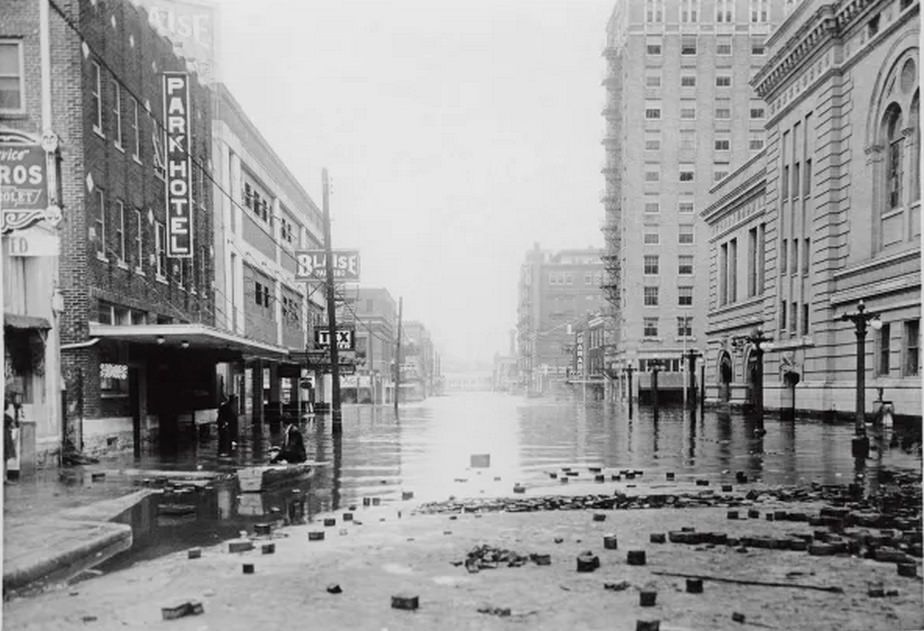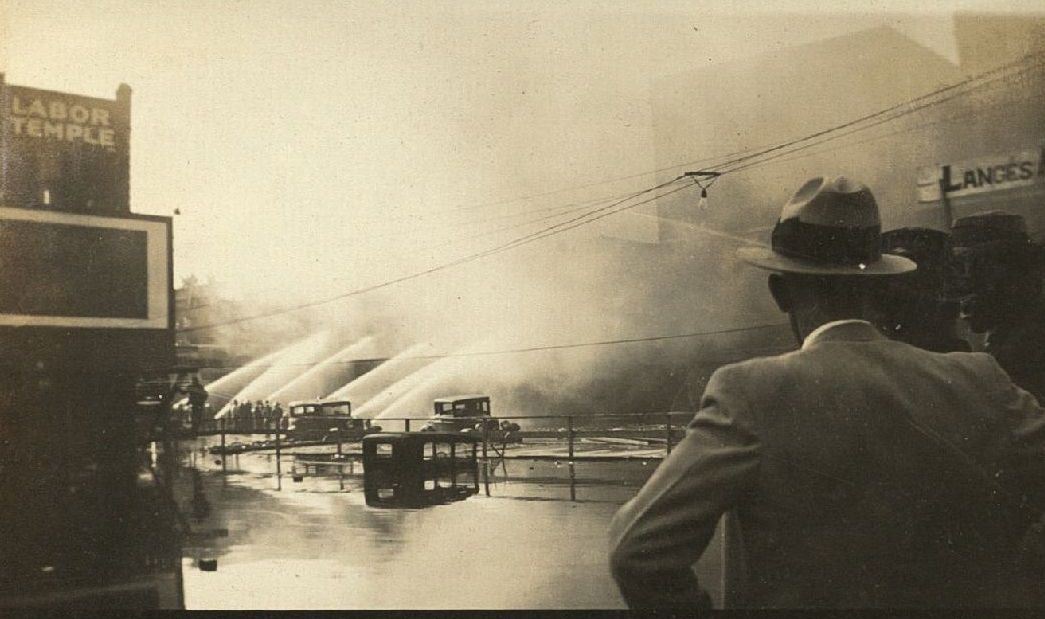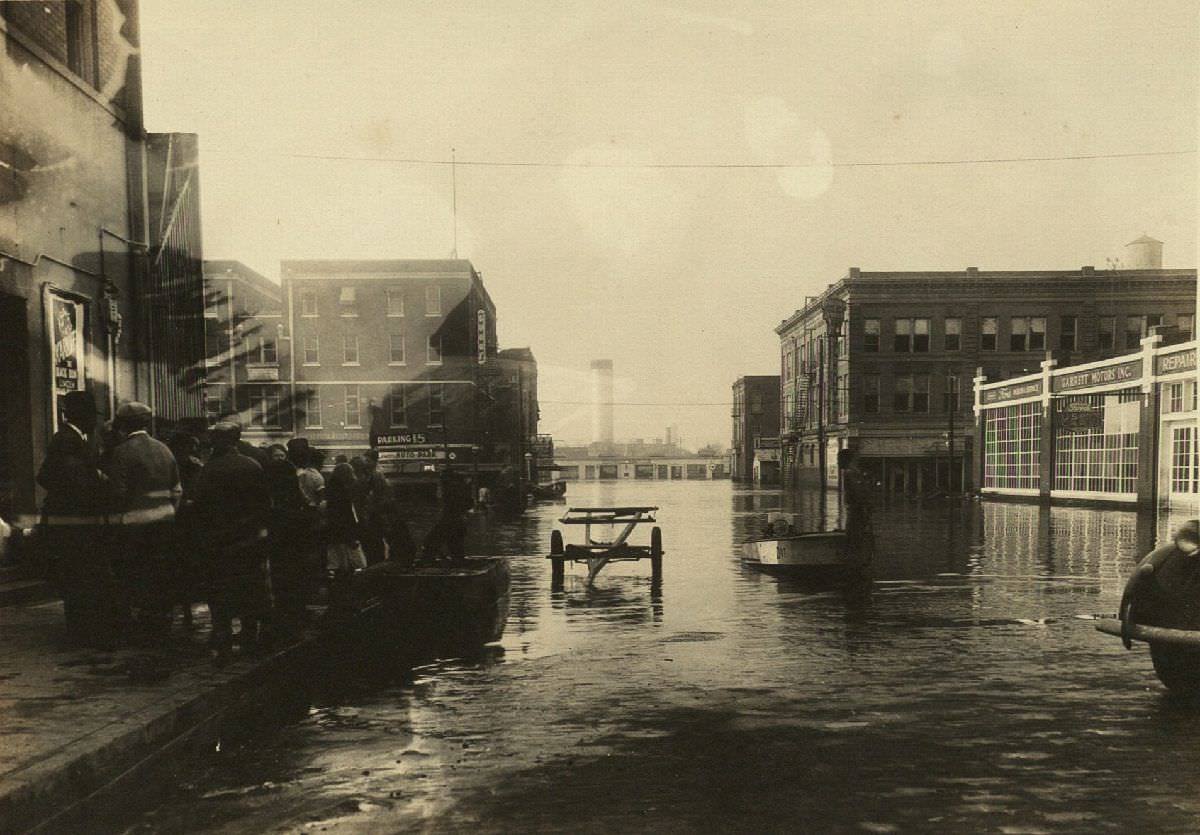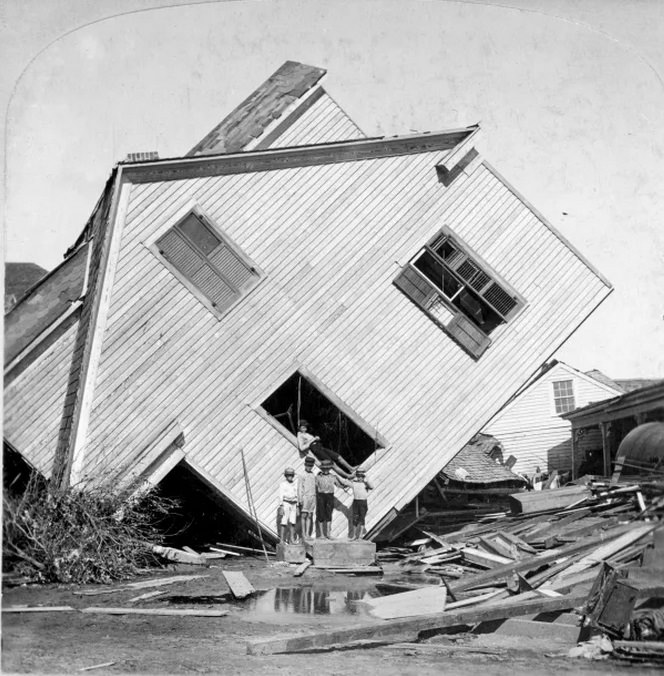Houston’s devastating flood of 1935 led to the formation of the Harris County Flood Control District to mitigate future flooding damage. The Hill Country and much of North Texas experienced heavy rains in 1935. Houston’s bayous reached maximum capacity in December after receiving heavy runoff. Heavy rains fell on December 7, 1935, flooding the Houston bayous, resulting in five inches of rain in the downtown area and higher levels north of the city.
The Magnolia Bridge, built by the Magnolia Brewery in 1912, significantly aggravated downtown flooding. As a result of heavy rains in December 1935, Buffalo Bayou overflowed into downtown due to runoff water backing up behind the narrow base of the bridge. The flood waters thoroughly washed away some buildings, which reached eight feet deep on Milam Street. Before subsiding, the deluge reached the Heights. The flood knocked out every firewater pumping station in the area. Putting out the Yellow Cab company’s fire, the fire department drove trucks directly into flood waters and sacrificed the vehicles so they could pump water from the flood to put out the flames.
Flooding lasted until December 10 and caused historic damage. The central water station and its wells were inundated, resulting in a limited water supply for days and a risk of contamination. Downtown had almost no bridges. Capitol Avenue Bridge was flooded, typically forty feet above the water level. Firefighters could not fight fires because the Central Water Plant was out of commission. Yellow Cab Company firefighter used a pumper to suck up muddy flood waters to fight a fire. The flood waters reached the second story of the Sears-Roebuck store on Buffalo Drive and Lincoln Street. Buildings collapsed, and others were severely damaged. Twenty to forty percent of the downtown buildings sustained severe structural damage. Floodwaters destroyed the Magnolia Brewery, the city post office, the farmer’s market, the MK&T railroad, and city archives. Twenty-five blocks of Houston’s business district and 100 blocks of residential areas were flooded. The death toll was seven. Submerged docks, sediment and wreckage, clogged the ship channel and uprooted railroad tracks crippled the Port of Houston for months after the flood. Railcars were submerged in flooded railroad yards. Crates of food and clothing washed out of warehouses were fished out of the bayou by Houstonians. Fish were felt from the mezzanine of the Rice Hotel by residents. While recovering from a severe flood in 1929 that caused nearly $1.4 million in property damage, Houston suffered more than $2.5 million in losses in the 1935 flood.
Magnolia Bridge was condemned scathingly by the commission as the sole cause of the downtown Houston disaster. The state of Texas ordered an investigation into the cause of the flood’s severity. The Texas legislature passed a bill establishing the Harris County Flood Control District unanimously on April 23, 1937. During heavy rainfall, the district constructed reservoirs to hold excess runoff.
Here are some rare historical photos that depict the magnitude and devastation caused by the 1935 Houston Flood.
#1 Downtown Houston after Buffalo Bayou flooding, 1935
#2 From the Dec. 11, 1935, Houston Press.
#3 Flooded street in Downtown Houston, 1935
#4 Flooded street in Downtown Houston, 1935
#5 Flooded Congress Avenue, 1935
#6 Flooded street in Downtown Houston, 1935
#7 Firefighters on flooded street, 1935
#8 Firefighters spraying water onto building fire, 1935
#9 Flooded street in Downtown Houston, 1935
#10 Flooded street in Downtown Houston, 1935
#11 Flooded street in Downtown Houston, 1935
#12 Flooded street, 1935
#13 Flood on Franklin Avenue,December 9, 1935
#14 Flood on Franklin Avenue,December 9, 1935
#15 Produce Row, December 1935.
#16 Looking north on Louisiana toward Texas Avenue, December 1935.
#17 View down Congress toward the Southern Pacific Station, later site of downtown post office, December 1935.
#18 Milam Street, looking east, December 1935.
#19 Buffalo Bayou, December 1935.
#20 Milam at Congress, looking north, December 1935.
#21 Louisiana between Rusk and Texas, looking northwest. Site of Jones Plaza today, December 1935.
#22 View toward the San Jacinto Street Bridge, looking east.
#23 Texas Avenue, looking west from Milam. Old City Auditorium is on the left, December 1935.
#24 Looking east over downtown, December 1935. White building at foreground is the criminal courthouse, where the back of Bayou Place is today. Structure at right-center is the farmer’s market, where Wortham Center is today.
#25 Houston’s bayous rose 52 feet above normal levels following heavy rains that lasted from December 6–9, 1935.

The resulting floods damaged nearly 40 percent of downtown structures beyond repair, including the post office, the farmers market, and nearly all of the bridges. Meanwhile, two-thirds of rural Harris County was left underwater. This catastrophic event prompted the construction of the Addicks and Barker Dams, which helped to prevent the bayous from flooding downstream—and downtown.
#26 Waters from the 1935 event even reached into the Heights, flooding Harvard Street and turning the Harvard Food Market at the corner of 9th into a temporary island.
#27 Hurricane Carla Comes Ashore

LIFE magazine photographer Flip Schulke captured a dramatic moment at Murdoch’s seaside bath house in Galveston after Hurricane Carla made landfall. Though it’s been destroyed several times by various storms, Murdoch’s has always rebuilt—and remains in operation today as a gift shop.





































I had not seen these photos before, thanks for sharing.